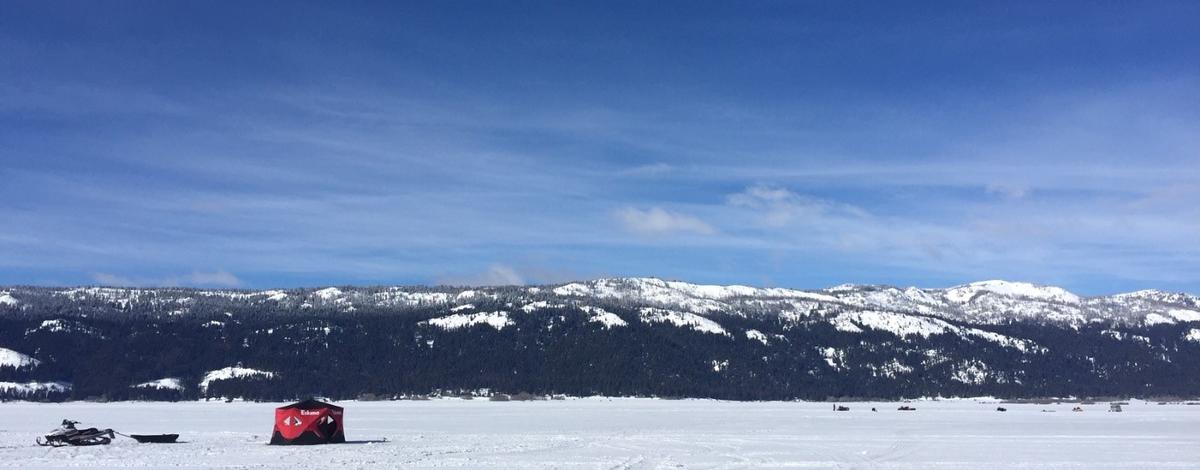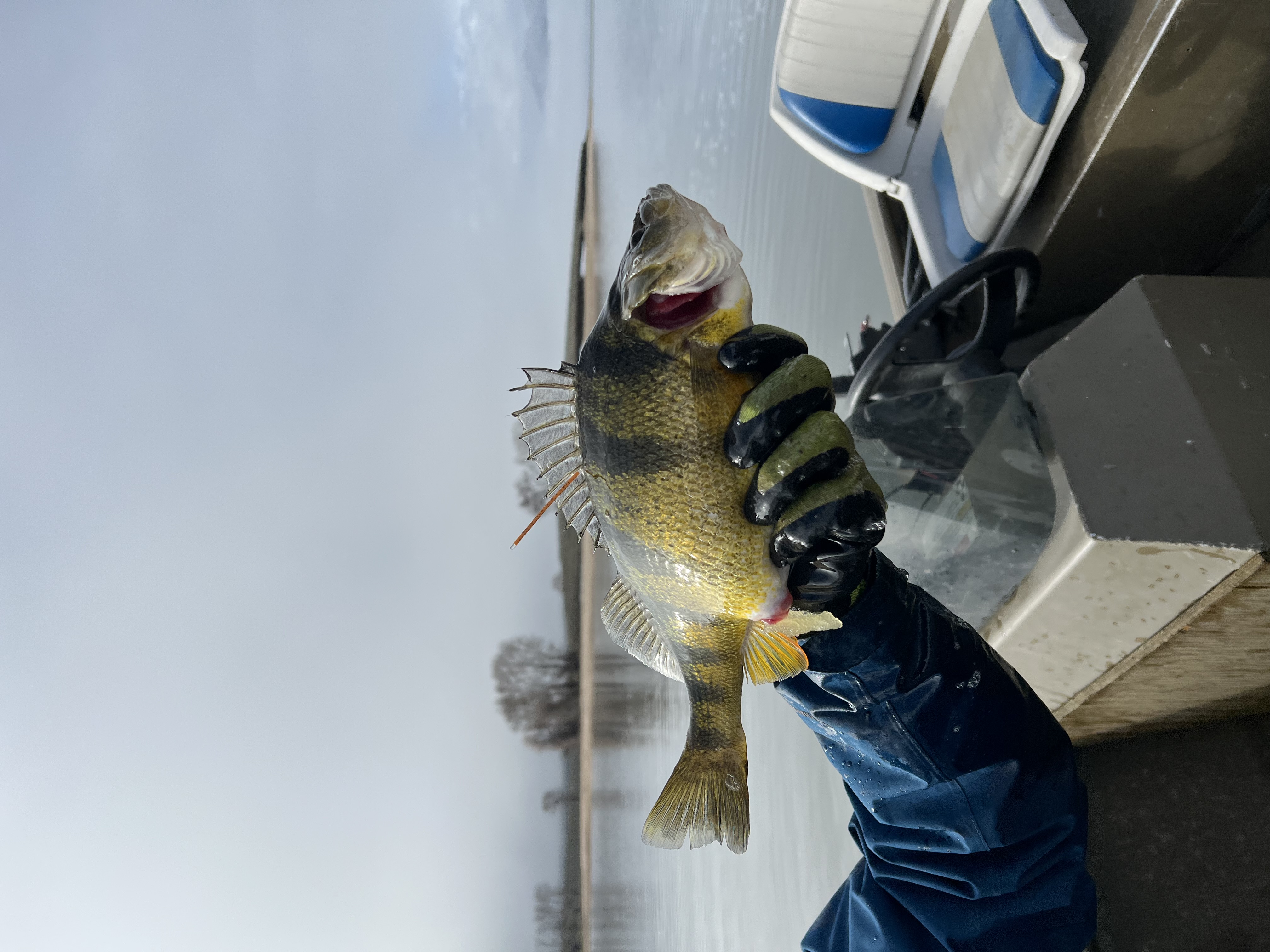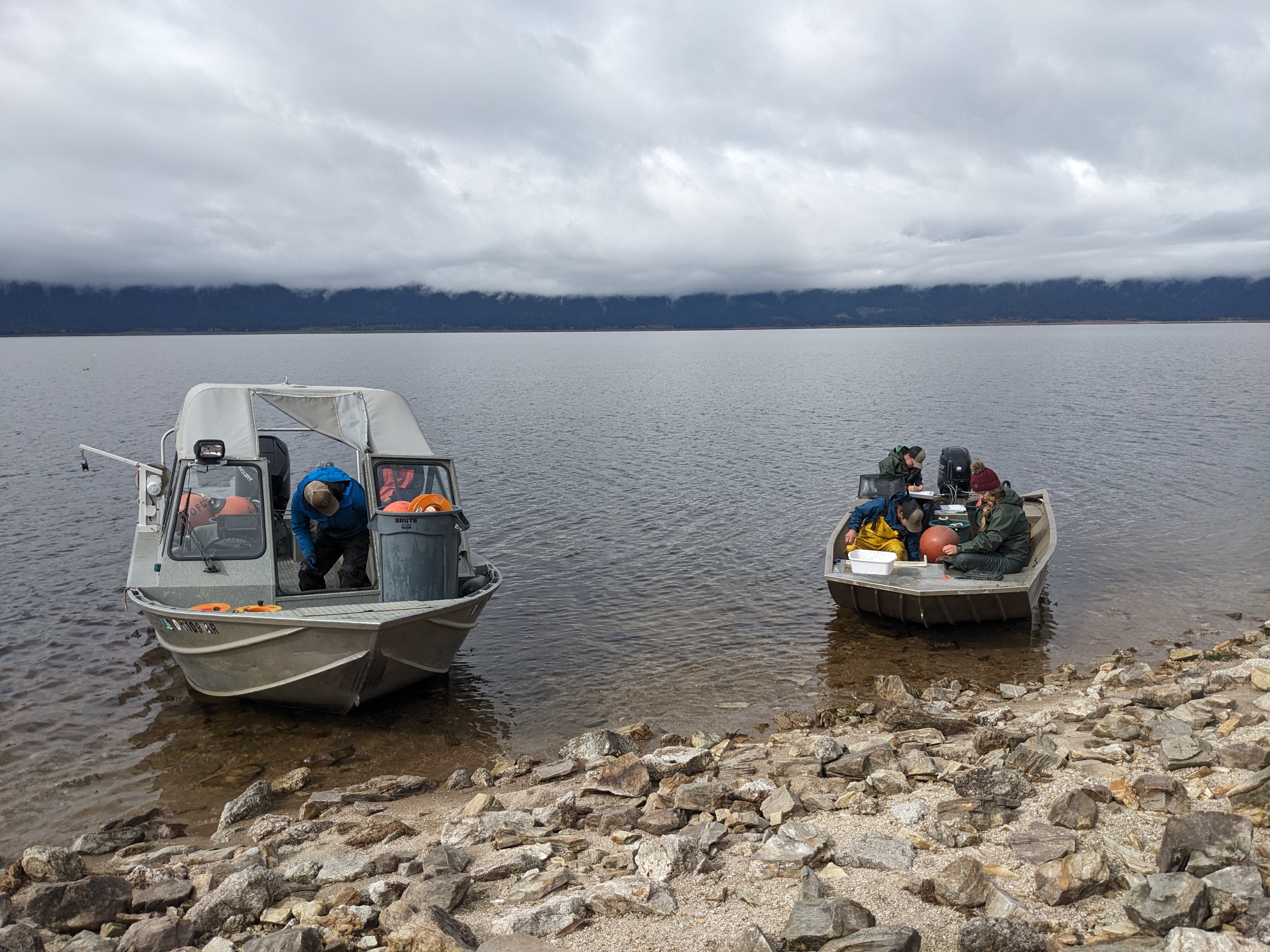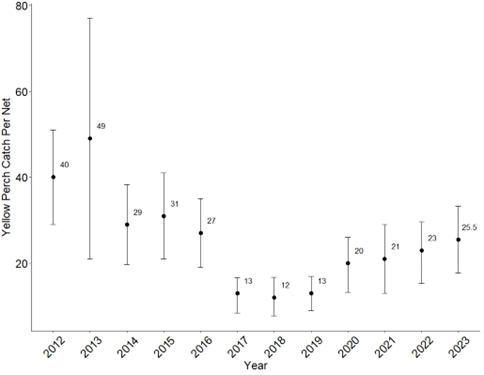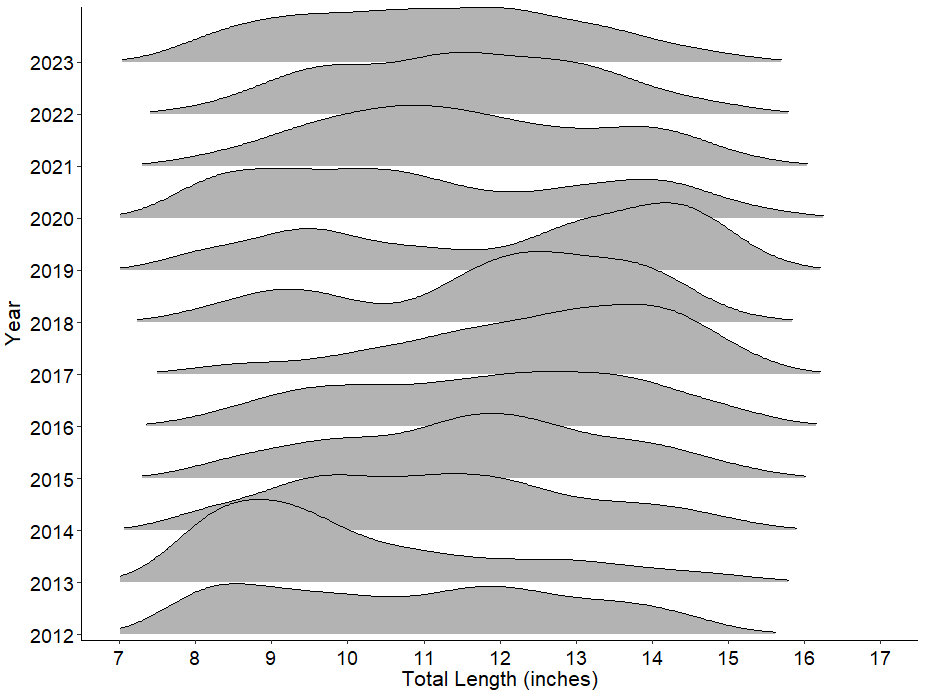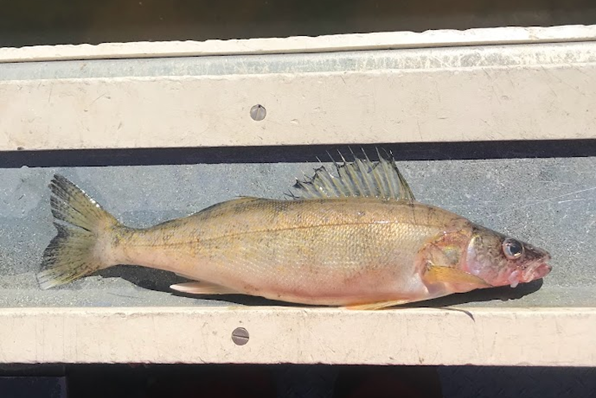Angler effort and harvest
We have heard concerns from some anglers that Lake Cascade is being overfished and that Fish and Game should consider bag limits or size limits for perch to sustain the fishery's quality. It’s true that the decline of many trophy perch fisheries in the midwestern US can been attributed to overfishing. However, Lake Cascade is a different beast. Here is what we know about fishing pressure and harvest on Lake Cascade.
In 2022, we conducted a year-long angler survey on Lake Cascade, and we estimated approximately 67,000 perch and 4,000 trout were harvested over the course of that year. We have been conducting tagging studies for over a decade, showing that around 10% of the lake's perch are harvested annually. Combining these two datasets, we can estimate that there are over 600,000 harvestable perch swimming in Lake Cascade – that's a lot of perch!
If only 10% of those perch are being harvested on an annual basis, harvest is not the main driver of perch abundance and catch rates for the Lake Cascade fishery. After all – Lake Cascade perch can live up to 16 years which is unheard of for yellow perch. If perch can swim around Lake Cascade for that long without being harvested, overharvest is not an issue.
Here’s another example of why limits are not warranted on Lake Cascade: One popular suggestion we’ve heard is to introduce a daily bag limit of 12 perch per angler. The first question to ask in considering this is: How many anglers actually harvest more than 12 perch per day?
During the year-long angler survey, we conducted around 1,400 angler interviews and found that only 3% of anglers harvest 12 or more perch per trip. In fact, 50% of the anglers we interviewed didn’t even harvest a perch. Therefore, imposing restrictive limits for perch on Cascade will not have a biological impact on the quality of the fishery. Rather, the cyclic nature described in the previous section, and shown in Figure 2, is what’s driving the characteristics of this perch fishery.
When fishing is great, we anticipate some down years to follow, and when the fishing is slow, we expect a strong year class to build the fishery back up again. These are called density-dependent cycles, and these cycles are typical of perch populations.
Since harvest is not the main driver for perch dynamics in lake Cascade, Fish and Game is not considering any changes to bag limits at this time.

